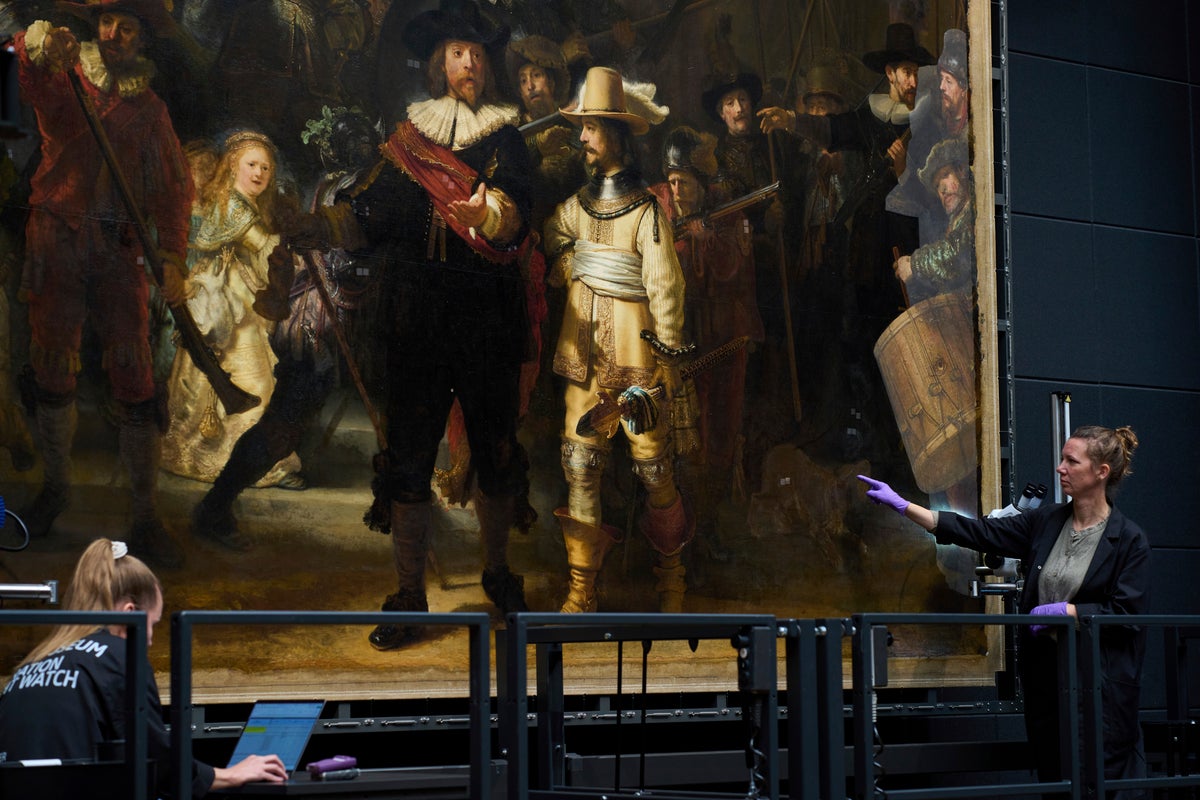
A curator at Amsterdam’s renowned Rijksmuseum has stumbled upon a surprising art historical revelation concerning Rembrandt van Rijn’s iconic Night Watch.
Anne Lenders announced on Tuesday that the barking dog featured in the masterpiece is a near-identical reproduction of a canine depicted in a 1619 pen and ink drawing by fellow Dutch artist Adriaen van de Venne.
The discovery, described as largely accidental, resolves a long-standing “canine conundrum” from the Dutch Golden Age.
“I wasn’t looking for this; it was really unexpected,” Lenders said in the glass room where Night Watch is undergoing extensive restoration.
She was visiting an exhibition at the Zeeuws Museum in the southern Netherlands when her eye fell on a picture of a dog by Van de Venne that was printed in a book by the poet Jacob Cats.
The original drawing — which turned out to be part of the Rijksmuseum’s own vast collection — was also on display
“The resemblance is so strong that at the very first moment I thought he (Rembrandt) must have used this,” she added.
That’s when the research started: a comparison of Van de Venne’s and Rembrandt’s dogs; their pose, even the collar they wear.
“The head turns in exact the same angle with the mouth slightly opened. … Both dogs have long hair and ears that hang vertical,” said Lenders.
In the Night Watch, the dog adds tension to a dark corner of the crowded composition, crouching and apparently barking near a drummer called Jacob Jorisz and just behind one of the iconic 1642 painting’s main characters, Lieutenant Willem van Ruytenburch.
The discovery is the latest in a series of revelations to emerge during a yearslong project to reexamine the 379.5 by 453.5-centimeter (149.4 by 178.5-inch) canvas using modern techniques. “Operation Night Watch” began in 2019 with an extensive study of the painting and is continuing with restoration work that is likely to take years to complete.
“One tends to think, well, it’s been researched so well, we know everything about it,” Rijksmuseum Director Taco Dibbits said.
“But the great thing with great art is that you always keep discovering things.”
One thing the Rijksmuseum couldn’t figure out was exactly what kind of dog it is, with expert opinions divided between a French or a Dutch breed.
Most likely, the two artists used a little poetic license.
“We will never have a conclusion on which breed it is,” Dibbits said. “But it’s definitely very much loved.”
